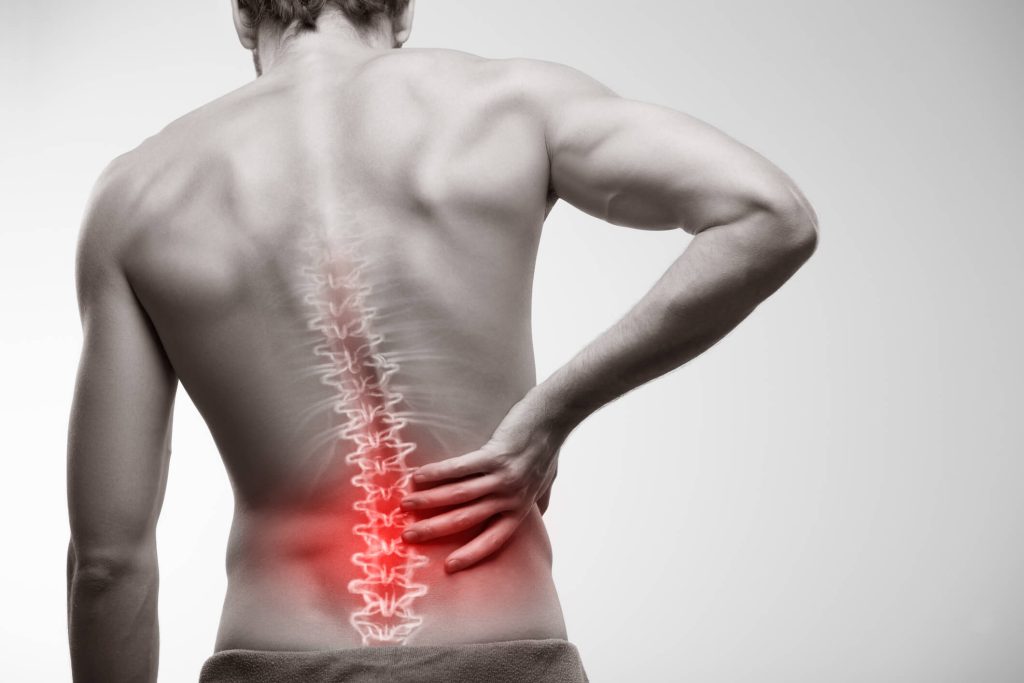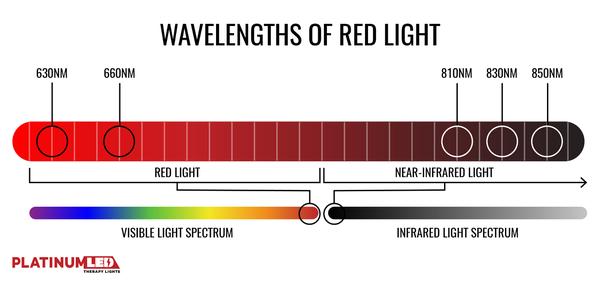The use of infrared light therapy for pain treatment may be something you’ve heard of if you work in the medical sector or experience chronic pain.
Near-infrared or far-infrared therapy, also known as IR for short, is a painless technique that employs light. It might treat acute and chronic pain, such as neck pain, lower back or muscle pain, etc.
Everyone might benefit from the pain-relieving effects of infrared waves, including athletes, recreational exercisers, and individuals with chronic muscle, nerve pain, arthritis, etc. Infrared rays and therapy devices like infrared lamps are being researched for application in numerous medical specialties.
So, if you wonder how to use infrared lamps for back pain, continue reading to learn everything!
How to Use Infrared Lamp for Back Pain
You need to position your lower back slightly rounded to spread the lumbar vertebrae apart. Then, place the infrared heat lamp directly over your lower back at nine inches from the skin’s surface. Infrared heat penetrates the skin’s surface and might promote blood flow to tissues.
Treatment times for each area of the body range from 14 to 25 minutes, depending on the device and the particular pain issue. Keep track of your time using the device in one location for the best outcomes. When the time is right, switch to the next area.
It is advised to begin with a single daily treatment and track your progress with photos if you are new to using infrared light therapy. You can only do a maximum of two treatments per day of infrared light therapy. You should do five to seven weekly treatments for the first four weeks.
Sleeping is not recommended during the treatment. So, you should always keep the lamp’s head between 9 and 12 inches away from your skin. It is recommended for light-sensitive skin to avoid this product as it may cause discoloration.
If you experience any negative effects, such as swelling or worsening discomfort, stop using the infrared lamp and consult a doctor.
How Does It Work?
The light energy penetrates multiple layers of skin to get deep into the muscles and nerves. Your cells might become more active after absorbing energy from the light.
Blood flow to the area might also increase to stimulate cellular regrowth and regeneration. This combination might help reduce inflammation and pain and heal wounds or injuries.
By entering the skin and increasing the circulation of oxygenated blood in the body, infrared light might promote faster healing of deep tissues while reducing pain.
When infrared light reaches the smallest unit in your body, it is absorbed by the cell’s power generators, known as mitochondria. This speeds up cellular metabolism and might promote the recovery of muscle, bone, skin, and subcutaneous tissue.
The release of nitric oxide, a chemical that signals the blood flow when activated, is a crucial element in this. Blood flow might be increased to help provide oxygenated blood and nutrients to various body parts, especially sore areas.
Aside from that, increased blood flow might allow body wastes to be eliminated from the body more quickly. These are all essential to the healing process, which might lessen pain and inflammation in the affected area.
Back pain and infrared light
In the health and wellness world, infrared light therapy for pain and light therapy generally are relatively new concepts. As a result, the body of information concerning their effects is still in its early stages.
However, as interest in technology grows, there is more evidence to support light therapy’s effectiveness. According to experts, infrared light might be frequently used to treat acute and chronic lower back pain, affecting 80% of people at some time during their life.
A flexible, wrap-around light therapy device might easily target the lower back in such difficult-to-reach areas. LED oral care devices also employ infrared light that might treat gum inflammation and pain.
Furthermore, infrared light speeds up cell regeneration, unlike ultraviolet light, which can harm the skin.

Source: ledtechnologies.com
Related: How to Use Infrared Light for Pain
Additional Health Benefits
Might improve cardiovascular health
Improved cardiovascular health might be one of the infrared therapy’s major health advantages. Nitric oxide is a crucial signaling molecule essential for blood vessels’ integrity, and infrared light promotes its production.
This chemical might help in arterial relaxation and prevent clotting and vessel clumping. Along with these benefits, it might also attack free radicals to reduce oxidative stress and regulate blood pressure.
Moreover, nitric oxide is crucial for circulation and increasing oxygen and nutrients supplied to injured tissues. As a result, infrared light might promote the regeneration of injured tissues, speed up wound healing, and relieve pain and inflammation.
Might help with muscle injuries
The action of the mitochondria within cells is enhanced by infrared therapy. So, it might aid in the growth of new muscle cells and tissues and their repair. In other words, infrared light might speed up the healing process after a muscle injury.
Might help with cancer treatment
A potential cancer treatment option might be infrared therapy. Nanoparticles might significantly activate when exposed to infrared light, making them possibly highly toxic to nearby cancer cells.
Might help with the treatment of various pain
Using infrared light treatment for pain, chiropractors, physical therapists, and other medical professionals are treating several other conditions like diabetic neuropathy, bursitis, arthritis, back pain, carpal tunnel syndrome, neck pain, rheumatoid arthritis, muscle strain, surgical incisions, and sciatica.
To improve the possible treatment outcomes, IR is also used in combination with other therapies and as a solo therapy for certain conditions.
For instance, a chiropractic office just put an AllCore360° machine inside an infrared lightbox. To promote long-term health and rehabilitation, AllCore360° works by assisting patients in stimulating all of their core muscles.
Building strength, enhancing balance, and boosting endurance might benefit from improved core stability, coordination, and balance. As a result, patients might get faster healing times and pain relief from the infrared light while rehabilitating their core and back strength.
Red vs. Infrared Light
You can find many products that use either red, infrared, or both types of light if you are thinking about trying light therapy for pain. So, understanding the differences between red and infrared light therapy is useful.
The depth to which the wavelengths of red and infrared light penetrate the human body is one distinction between them. Depending on its wavelength, light has a variety of colors. When all forms of radiation are considered, the human eye can detect wavelengths between 400 and 700 nanometers, a very small range.
The longest visible wavelengths are found near the end of the spectrum in red light. Infrared light is not visible to the human eye and is beyond that range. You can only see the red lights on treatment devices with both red and infrared LEDs because the human eye cannot perceive infrared light.
Furthermore, red and infrared light have different therapeutic uses for LED devices because of their different wavelengths. Red light has several uses in cosmetic and anti-aging treatments because it affects the skin’s surface.
Since infrared light treatment may reach deeper into the body, it might cure nerve and muscle pain. However, the two light sources can work together, which might cure discomfort in the body at various depths of tissues.

Source: platinumtherapylights.com
You Might Be Interested: Is Red Light Therapy the Same as Infrared?
Potential Risks of Infrared Therapy
Humans are constantly exposed to infrared radiation from the sun in the form of heat. However, infrared saunas are popular nowadays, but scientists worry about potential health risks.
The wavelength of infrared light may cause thermal or heat damage. Thermal damage can happen even when there is no discomfort. Therefore, infrared therapy shouldn’t be used on pregnant women, anyone with heart disease, or those who are severely ill.
Furthermore, doctors warn against utilizing infrared therapy to treat chronic diseases without following the recommended course of action and the use of medications. Although infrared treatment may have many health benefits, research is still in its early stages.
As a result, it should primarily be viewed as an addition to medical treatment, and other regimens should be continued as recommended.
Conclusion
We have cone to the very end. Even though some individuals are still skeptical about infrared light therapy’s ability to relieve pain, current research has shown that it might be an effective treatment for many conditions.
Infrared treatment is a safe and efficient approach that might treat many conditions and reduce discomfort, and long-lasting pain relief. Additionally, injured bodily parts might be healed with infrared help.
Therefore, it is essential to validate affordable and secure approaches for treating painful conditions, enabling individuals to lead active and productive lives.
We hope this post was helpful and that you now understand how to use infrared lamp for back pain, how it works, and what other benefits using infrared treatment might provide.
Remember, you should always consult with a professional or doctor before planning to use such therapy for your overall health.
Good luck, and take care!

Hello! I’m Nicky Rodgers.
Almost a decade ago, I got excited about the idea of employing alternative methods like red light therapy to create a healthier life.
To learn more about it, I did my Certified Light Therapist course from Photonic Therapy Institute and started looking into the intricacies of how light therapy influences several bodily processes. Before I knew it, my interest had become an obsession which resulted in this extensive blog.
Here, I offer countless well-researched articles to help you understand the benefits and uses of light therapy. I hope this information gives you a head start in your wellness journey.
